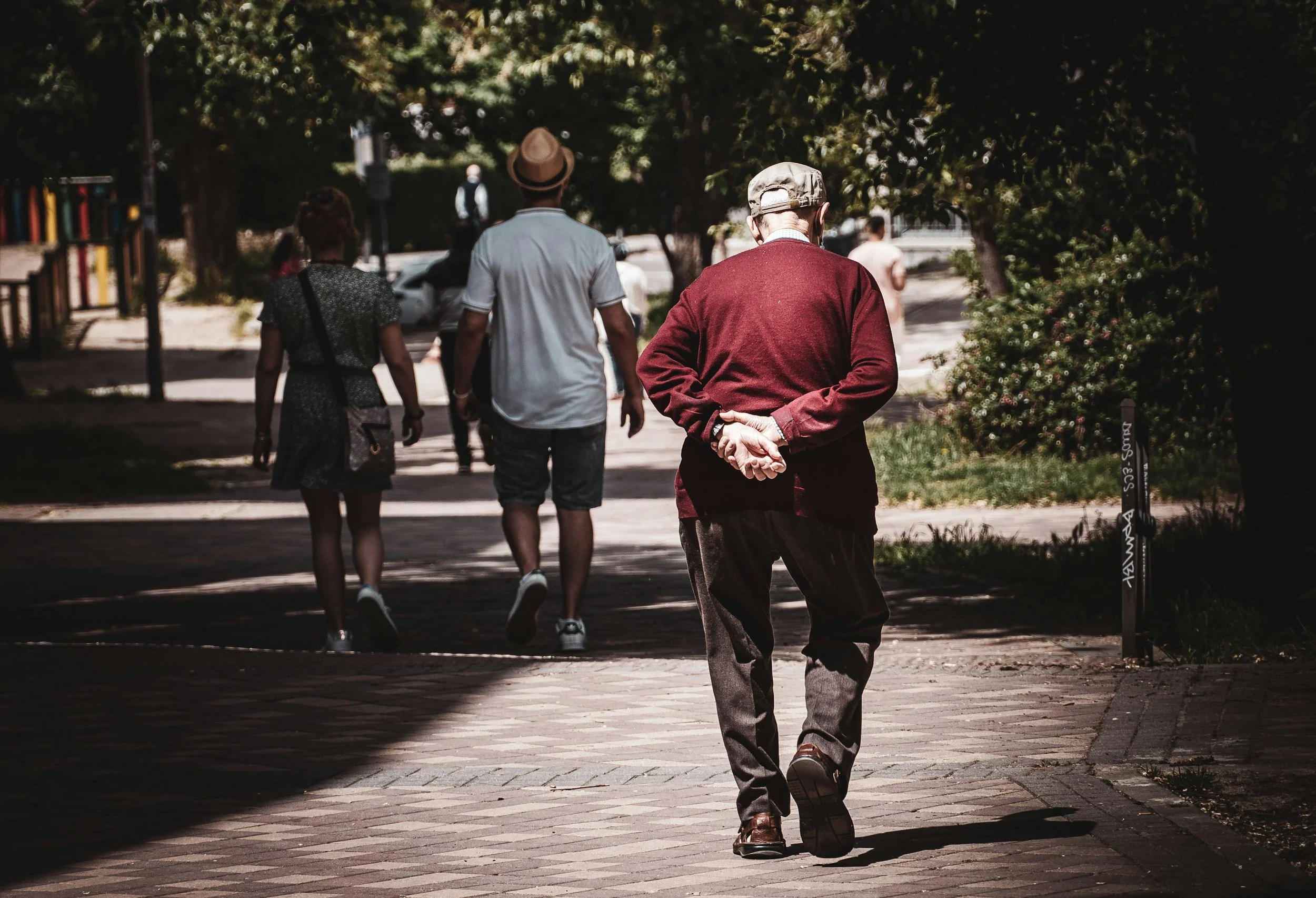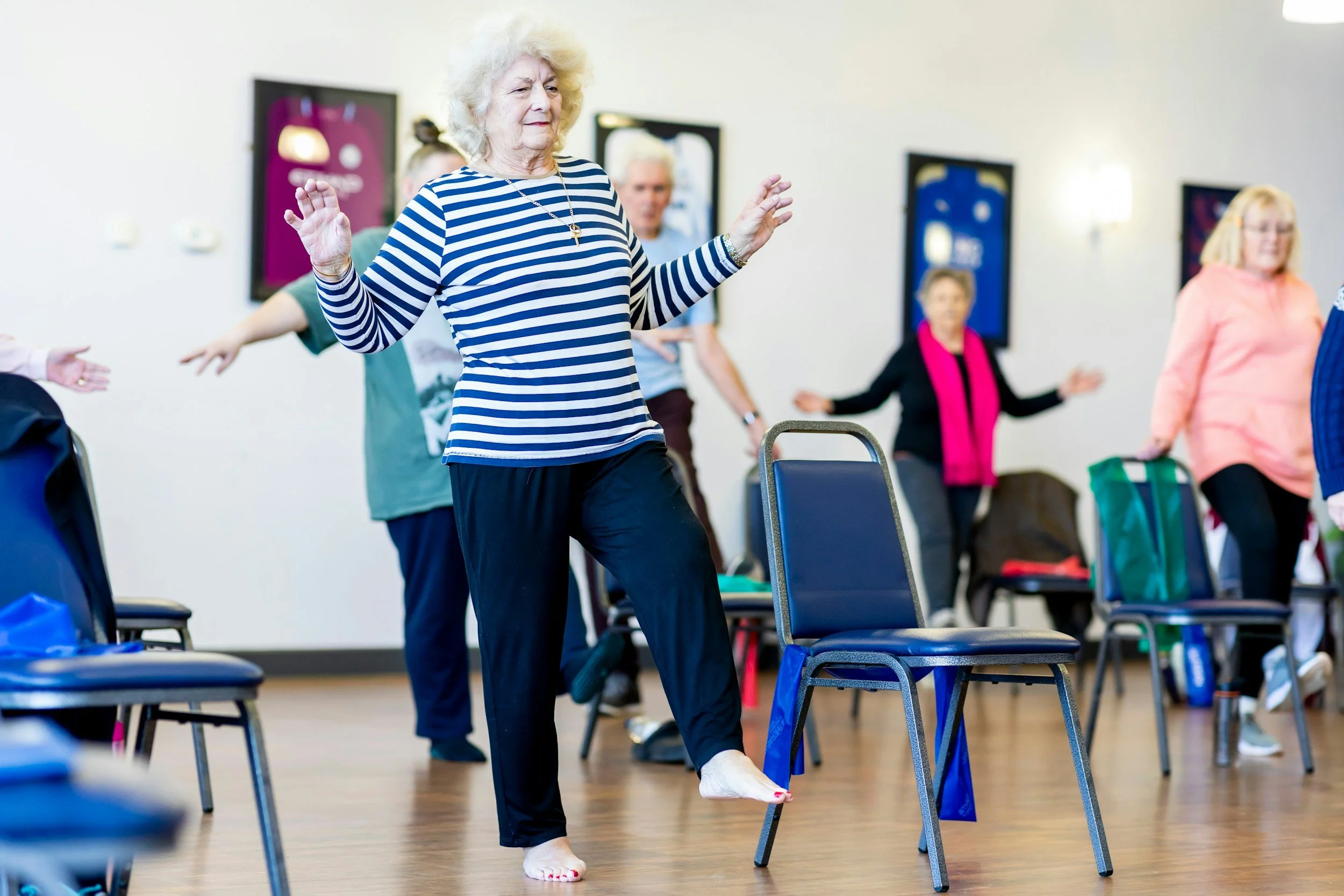Before I Fall… How Do I Know My Balance Needs Work?
Long before a fall happens, our body starts to adapt to the knowledge that our balance systems are not working as they should be. Our bodies are smart and are alerted to changes before we are consciously aware. Or maybe ready to accept that it is happening. There are many ways we may compensate for progressive balance decline.
It may start with using furniture or walls to steady yourself or walk around your home. Or you have to brace yourself on something as soon as you stand up. You may notice that your steps start to shuffle, or you have to keep your head down while walking or else you feel unsteady. Going outside becomes less appealing because of stairs or uneven ground. You need a lot of light to see where you are going. Maybe you feel a little dizzy if you bend down, turn, nod or turn your head…so you avoid those things.
Elderly gentleman walking while looking down, with hands braced behind his back.
These are all warning signs that your balance needs some work. We have 3 balance systems that hold us up against gravity:
Visual
Vestibular
Somatosensory
Let’s start with vision. We all primarily use our vision to tell us where we are in space. No matter how impaired it may be. Changes to vision over time (e.g. cataracts, glaucoma, retinopathy) make it so that the accuracy and complete picture are missing from the input our eyes are giving our brain. This then causes delays in how our reflexes can respond to visual stimulus, increasing likelihood of falling.
Next we have the Vestibular system, or your inner ear. The purpose of this system is to provide feedback to your brain about where you are in space as you move through it. There is basically a gyroscope in each inner ear that responds to acceleration, deceleration and changes in position in all planes of motion. This system starts to slow down with: age, hearing loss, tinnitus, brain injury etc… Decreased exposure to challenging stimulus also contributes to decline in vestibular function. What do I mean by this? The more we know our balance is impaired, the less likely we are to do things to challenge it, thus the vestibular system starts to slow down as an adaptation to decreased use of this system. This causes a Catch-22 effect that steadily leads to balance decline.
Inner ear digram
Finally we have the somatosensory system. Somat- is a prefix that means body. Somat+Sensory= the bodies sensory system. We have pressure receptors in all of our joints (proprioceptors) that respond to changes in our weight distribution etc. This tells your brain where your limbs are and your brain in turn tells your limbs what to do after getting this information. When the information breakdown starts to happen, this system gets greatly impacted. Issues such as neuropathy, Parkinson’s disease, other sensory or neurological impairments are common sources of information breakdown. Any deficits to the somatosensory system make it more likely that a fall will occur.
The CDC data tracking for 2024 estimated 9 million falls in people 65+ that resulted in injury that restricted activity for more than one day. Falls are the leading cause of injury-related death for those 65 and older. This is an epidemic that requires intervention. So what can you do about it?
While there are various strategies to mitigate falls. Exercise and movement have been shown to be the most effective interventions. Both pre and post falling. Sure Step Personal Training stands out as an easily accessible solution that aims for falls prevention. By offering personalized training programs tailored to your individual needs, Sure Step trainers effectively guide you to improve strength, balance, coordination, and build confidence in participants. Their expert trainers employ evidence-based techniques to ensure that each client receives the most effective support possible. By choosing Sure Step Personal Training, individuals can significantly reduce their risk of falls, empowering them to enjoy a more active, independent, and secure lifestyle. Get in touch today to see how we can help you stay Independent.
Senior exercise class, class is performing single leg balance
* This is intended for educational purposes only and is not intended as medical advise or a substitute for medical advise. Please consult your physician before starting any new exercise program*
-



